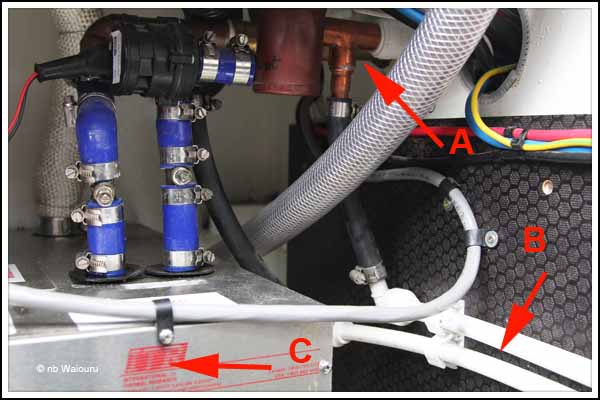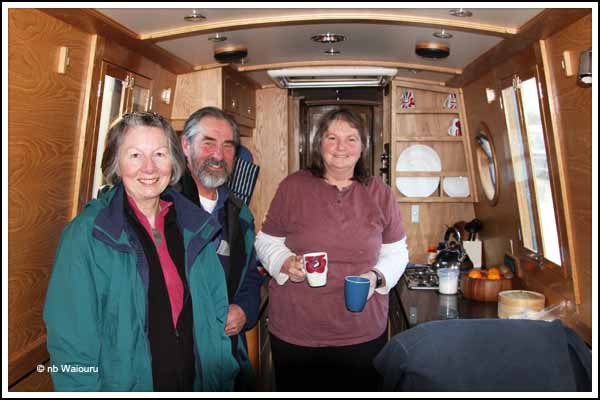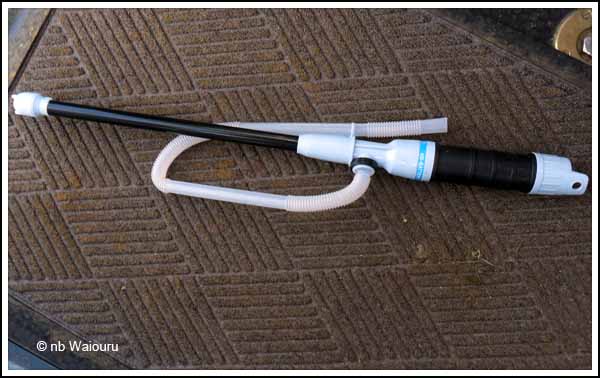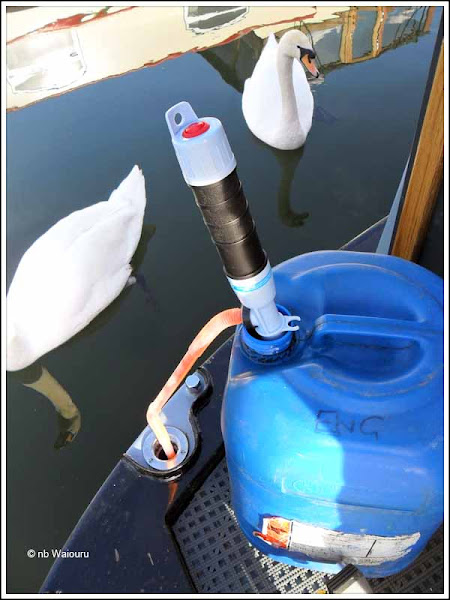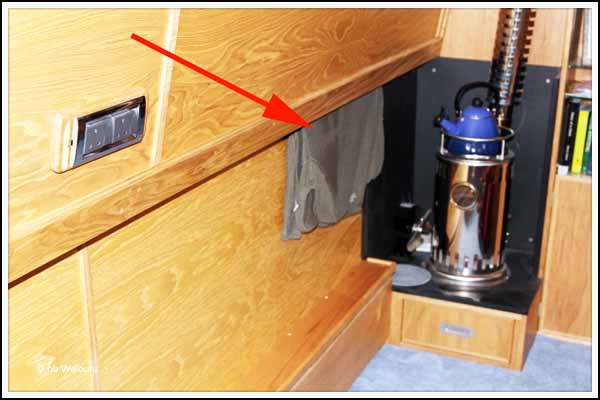The Hurricane. We received a very prompt reply from Sterling after I emailed them yesterday evening to ask whether the PDAR was able to equalize/de-sulphate the domestic battery bank as it had a maximum voltage of 14.8V and the Rolls Battery Manual stated a charge between 15.4V and 16.04V was required.
The reply from Sterling stated
“It's not that simple. We can push up the voltage but it would destroy your electrical kit on board. We found 14.8 is as high as you want to go. The batteries will be fine”
I had anticipated the potential damage from high voltage on all the on-board electrics/electronics and had intended to turn off the master isolation switch when performing the equalizing charge!
Sterling are experts in this field so I assume I should trust their advice the batteries will be OK with a 14.8V charge.
Now for today’s lessons.
The Hurricane. Yesterday the Hurricane heater stopped working. The thing is pretty much bulletproof and is also sophisticated enough to do self-diagnostic checks. The control box display was showing error code “7” which the manual states means “Flameout” and describes the fault as either a lack of fuel or air leaking into the fuel line which is starving the heater of fuel.
My first effort was to check the inline fuel filter.
Obviously some fabrication debris from inside the tank but at least the filter had contained it. Nick (the ABC engineer) suggested we move Waiouru back to the wharf and he would have a look at the heater today. Having two separate heating sources meant we didn’t freeze during the night. The Refleks stove kept us very cosy. In the morning we cruised down to the wharf where Nick examined the Hurricane. He disconnected the fuel line at the heater….. No fuel! Then he asked me to place my mouth over the diesel tank vent which is located beside the filler cap and blow into the tank to pressurize it. The vent was large and cold with a faint taste of diesel. My lungs aren’t what they once were and bending over with head down and ar$e up isn’t my favourite position. However Nick reported fuel was pouring out his end of the fuel line. He deduced that the filler point inside the tank is quite high. This combined with the heater being mounted on the swim and the fuel lines being fixed on the underside of the deck in the engine compartment meant there was the potential for the fuel to have insufficient ‘head’ to reach the heater. The situation may have also been aggravated by the large toilet tank under the rear cabin floor being half full whilst the water tank in the bow was half empty. So the bow is high and the stern low. There was a further problem at the point where the fuel line exits the tank. The line dipped down before rising up and then back down. The first thing we did was fill the tank to the top. The heater immediately started and ran correctly. Next Nick modified the fuel line at the exit from the tank to remove the ‘S’ in the line. We will now run the heater to see if the fault is repeated!
After filling the water tank Jan and I decided to take Waiouru down through Padworth Lock and wind her before mooring below the lock. This is where we leaned the second lesson.
Some lock gates have additional hazards. Now we had already been down through Aldermaston Lock and Padworth Lock works on exactly the same principle. Both locks are doubles with the paddles built into the gates. They both have a cross-over walkway attached to the top of each gate. Remember how we had started the Refleks stove because the Hurricane wasn’t working. Well the stove flue doesn’t fit under the walkway on the lower gate when it is open.
A nice big dent in the top of our new flue! ![]()
I was concentrating on aligning Waiouru with the gap and didn’t notice the top of the flue was going to hit the gate until too late. At least my frantic efforts to throw Waiouru into full reverse stopped the entire flue from being smashed off the roof. In future we must remember to remove the stove flue. This gets added to the TV mast and the pram cover.
The flue has now been removed and my modified ‘paint pot’ cover Is fitted over the opening on the roof.
I thought the pot might have been made of stainless steel but apparently not! It’s starting to show signs of rust so that’s another job for the list.
Cleaning the boat. We couldn’t get Waiouru against the bank below the lock and eventually decided to return to our original mooring above Aldermaston Lock. So we did four locks today only to arrive back at our original mooring. Albeit facing the opposite direction! As we were now facing the opposite direction I took the opportunity wash down and clean the towpath side of the boat.
No sooner had I completed washing down and cleaning the side when two C@RT contractors walked past cutting back all the vegetation. The side of the boat and towpath were promptly covered with clippings. I waited until 5.00pm and then went back out to clean all the clippings off the side of Waiouru and then went for the usual evening walk. Around the bend coming towards me was another C&RT contractor with an air blower cleaning all the clippings off the towpath. Yes…. when I returned to Waiouru it was again covered in clippings! Note to myself……….Don’t wash the boat if the vegetation is going to be cut!
Can’t wait until Sunday as we are planning to start our first short cruise. It will have been 16 months since we arrived at Aldermaston Wharf to start the rebuilding of Waiouru so it’s now time to GO!











